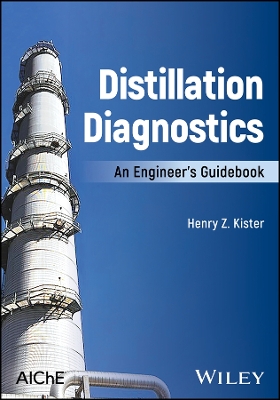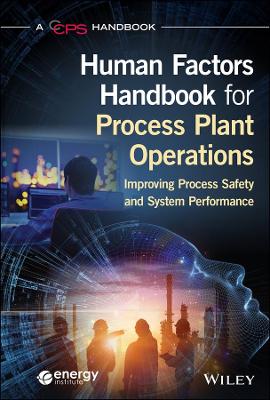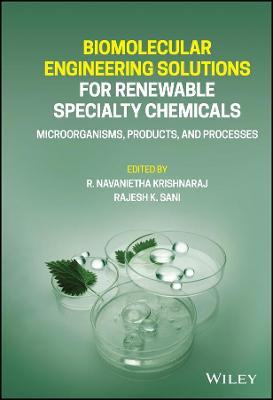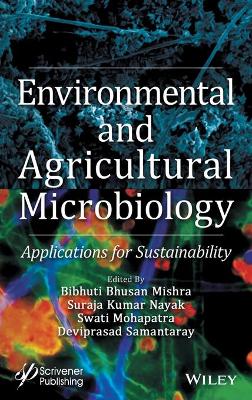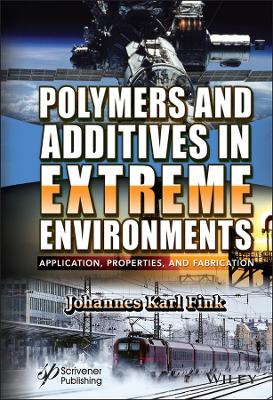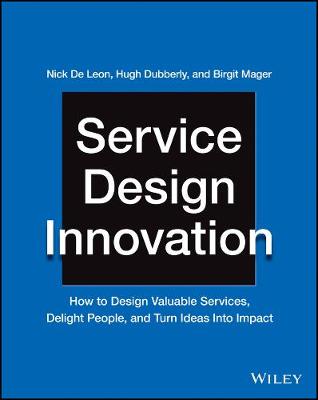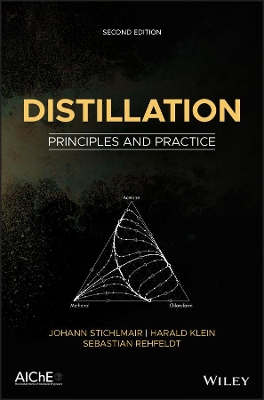Control in Bioprocessing
 -15%
portes grátis
-15%
portes grátis
Control in Bioprocessing
Modeling, Estimation and the Use of Soft Sensors
Lopez Perez, Pablo A.; Femat, Ricardo; Lopez, Ricardo Aguilar
John Wiley & Sons Inc
03/2020
296
Dura
Inglês
9781119295990
15 a 20 dias
682
Part I Overview of the Control and Monitoring of Bioprocesses and Mathematical Preliminaries 1
1 Introduction 3
1.1 Overview of the Control and Monitoring of Bioprocesses 3
1.1.1 Why Nonlinear Control in Bioprocesses? 3
1.2 Improvements to Bioprocesses Productivity 13
1.2.1 Cell Lines 16
1.2.1.1 Cell Culture Process General 18
1.2.2 Microorganism Growth Under Controlled Conditions 18
1.2.3 On the Environment for the Microorganism's Growth 19
1.2.4 Improving the Productivity for Specific Metabolic Products 21
1.3 Bioprocess Control 22
1.3.1 What is a Bioprocess? 22
1.3.2 Bioprocess Monitoring and Control 23
1.3.3 Stability of Bioprocess 25
1.3.4 Basic Concepts and Controllers 27
1.3.5 Advanced Control Schemes: Multivariable Control, Robust, Fuzzy Logic, Model Predictive Control, or Others 30
1.4 Process Measurements 32
1.4.1 The Drawback for Monitoring Bioprocess 32
1.4.2 Primary on-Line Sensor (e.g. Dissolved Oxygen, Temperature, Culture pH, Pressure, Agitation Rate, Flow Rates, Redox, CO2, and Others) 33
1.4.3 Primary in-Line Sensor 33
1.4.4 Process Analytical Technologies (Gas Analysis, Spectrometers, Infrared, HPLC, PCR, and Others) 34
1.4.5 Software Sensor (e.g. Cell Mass Estimation Via Complex Medium, Primary Carbon Substrate, Concentration Product of Line, Metabolites, Sensor to Computer Via Wireless) 36
1.5 Dynamic Bioprocess Models 40
1.5.1 Bioprocess Modeling for Control Purposes 40
1.5.2 Mass and Energy Balance of the Bioprocess 41
1.5.2.1 Dynamical Mass Balance 41
1.5.2.2 Batch Process 42
1.5.2.3 Fed-Batch 42
1.5.2.4 Continuous 43
1.5.2.5 Energy Balance 43
1.5.3 Black Box, White Box, and Gray Box Models 45
1.5.3.1 Black Box 45
1.5.3.2 White Box 45
1.5.3.3 Gray Box 45
1.5.4 Linear and Nonlinear Models 45
1.5.5 Segregated and Non-segregated Models 46
1.5.6 Structured and Unstructured Models 46
1.5.7 Structured Models 47
1.6 Process Optimization 51
1.6.1 Off-Line and On-Line Optimization of Bioprocesses 51
References 53
2 Mathematical Preliminaries 63
2.1 Systems of Ordinary Differential Equations 63
2.1.1 Differential Equations, Vector Fields, and State-Space Description 64
2.2 Linear Systems 70
2.2.1 The Fundamental Theorem for Linear Systems 70
2.2.2 Linear Systems in R2 71
2.2.3 Complex Eigenvalues 71
2.2.4 Multiple Eigenvalues 72
2.3 Nonlinear Dynamical Systems and its Analysis 72
2.3.1 Preliminary Concepts and Definitions 72
2.3.1.1 Continuous Dynamical Systems 73
2.3.1.2 Phase Space and Phase Portrait 73
2.3.1.3 Trajectories of Autonomous and Non-Autonomous Systems 73
2.3.1.4 The Vector Field 74
2.3.1.5 Lipschitz Condition 74
2.3.2 Existence-Uniqueness Theorem 75
2.3.2.1 Algebraic Properties of Lipschitz Continuous Functions 76
2.3.3 Dependence on Initial Conditions and Parameters 77
2.3.4 The Flow Defined by a Differential Equation 78
2.3.4.1 Differential Flow 78
2.3.5 Equilibrium Points 79
2.3.5.1 Equilibrium 79
2.3.6 The Hartman-Grobman Theorem 80
2.3.7 The Stable Manifold Theorem 81
2.3.8 Saddles, Nodes, Foci, and Centers 82
2.3.9 Center Manifold Theory 84
2.4 Stability Theory via Lyapunov Approach 84
2.4.1 Stability Notions 84
2.4.1.1 Stability 84
2.4.1.2 Asymptotic Stability 85
2.4.1.3 Exponential Stability 86
2.4.2 The Direct Method of Lyapunov (Second Method) 86
2.4.2.1 Positive Function 86
2.4.2.2 Theorem of Lyapunov 87
2.4.2.3 Globally Uniformly Asymptotically Stable of Lyapunov 88
2.4.2.4 Definition Matrices and Functions 88
2.4.3 The Indirect Method of Lyapunov (First Method) 90
2.4.3.1 Linearization 90
2.4.3.2 Stability by Linearization 90
2.4.4 Lasalles Invariance Principle 91
2.4.5 Invariant Set 91
2.4.6 Input/Output Stability 92
2.4.7 General Properties of Linear and Nonlinear Systems 93
2.4.8 Advanced Stability Theory 93
2.4.8.1 Concepts of Stability for Non-Autonomous Systems 93
2.4.8.2 Lyapunov-like Analysis Using Barbalat's Lemma 94
2.5 Bifurcation Theory 94
2.5.1 Periodic Orbit 95
2.5.2 Limit Cycle 95
2.5.3 Bifurcation of Maps 95
2.5.4 Hyperbolic and Non-Hyperbolic Equilibrium Points 96
2.5.5 Bifurcation Point 96
2.5.6 Lyapunov Exponent 96
2.5.7 Chaos 97
2.5.8 Topological Equivalence 97
2.5.9 Example Bifurcations and Structural Stability of Dynamical Systems 98
2.6 Overview of Non-Smooth Dynamical Systems 99
References 101
Part II Observability and Control Concepts 107
3 State Estimation and Observers 109
3.1 Observability 109
3.1.1 Context and Motivations 109
3.1.2 Linear Observability 112
3.1.3 Nonlinear Observability 113
3.1.4 Geometric Conditions of Observability 114
3.1.4.1 Differential-Algebraic Observability Approach 115
3.1.5 Analytic Conditions for Observability 116
3.1.6 Detectability 116
3.1.7 Unobservable Subspaces 116
3.1.7.1 A Geometric Characterization 117
3.1.8 Unconstructive Subspaces 117
3.2 Observer Designs for Linear Structures 117
3.2.1 Luenberger Observer 118
3.2.2 Kalman Filter 119
3.2.3 Wiener Filter 120
3.3 Observer Designs for Nonlinear Structures 121
3.3.1 Extended Luenberger Observer 121
3.3.2 Extended Kalman Filter 122
3.3.2.1 First-Order Extended Kalman Filter 122
3.3.3 Asymptotic Observers 124
3.3.3.1 High-Gain Observer 124
3.3.4 Adaptive-Gain Observers 126
3.3.4.1 Adaptive High-Gain Observer 126
3.3.5 Sliding-Mode Observers 127
3.3.5.1 Sliding Mode Observers for Linear Uncertain Systems 127
3.3.5.2 Nonlinear Approaches to Sliding Mode Observer Design 130
References 131
4 Control of Bioprocess 135
4.1 The Control Idea 135
4.1.1 General Definitions 136
4.1.2 Controllability of Input/State/Output Systems 138
4.1.3 Steady-Output Controllability 139
4.1.4 Linear Controllability Analysis LTI Test 140
4.1.4.1 Controllable and Reachable Subspaces 140
4.1.4.2 Controllable Matrix Test 140
4.1.4.3 Eigenvector Test for Controllability 140
4.1.4.4 Popov-Belevitch-Hautus 141
4.1.4.5 Lyapunov Test for Controllability 141
4.1.5 Stabilizability 141
4.2 Controllers for Linear Systems 141
4.2.1 Linear Feedback 141
4.2.2 Proportional, Proportional-Integral, Proportional-Integral-Derivative 143
4.2.3 Optimal Control 143
4.2.4 Observer Based Controllers 144
4.3 Nonlinear Controllers 145
4.3.1 Nonlinear Controllability 145
4.3.2 Exact Feedback Linearization 147
4.3.3 Input-Output Linearization 147
4.3.3.1 Lyapunov-Based Control Design Methods 148
4.3.3.2 Back-Stepping Control 148
4.3.4 Nonlinear Sliding Mode 149
4.3.4.1 Sliding Surface Design 149
4.3.4.2 Control Law First-Order Sliding Mode Control 150
4.3.4.3 Control Law Second-Order Sliding Mode Control 151
4.3.4.4 Twisting Algorithm 152
4.3.4.5 Super Twisting Algorithm 152
4.3.4.6 Variable Structure Systems 152
4.3.5 Model Predictive Control 154
4.3.6 Control Using Neural Network 155
4.3.7 Nonlinear Design of Adaptive Controllers 156
4.3.7.1 Identification of Unknown Parameters 156
4.3.7.2 Observer-Based Identification 157
4.3.7.3 Adaptive Control Under Matching Conditions 157
4.3.7.4 Indirect Adaptive Control 158
4.3.7.5 Model Reference Adaptive Control 158
References 161
Part III Software Sensors and Observer-Based Control Schemes for Bioprocess 169
5 Dynamical Behavior of a 3-Dimensional Continuous Bioreactor 171
5.1 Introduction 171
5.2 Bioreactor Modeling 173
5.2.1 Estimation of the Kinetic Parameters 173
5.3 Main Results 175
5.4 Concluding Remarks 181
References 182
6 Observability Analysis Applied to 2D and 3D Bioreactors with Inhibitory and Non-inhibitory Kinetics Models 185
6.1 Introduction 185
6.2 Materials and Methods 186
6.2.1 Kinetic Models of Inhibition 186
6.2.1.1 Dynamics Models 187
6.2.2 Observability Criterion 188
6.3 Results and Discussion 188
6.4 Implementation of a Linear Observer to Check the Results of the Observability Analysis 200
6.5 Conclusion 201
References 202
7 Production System Myco-Diesel for Implementation of "Quality" of the Observability 205
7.1 Introduction 205
7.2 Methodology 206
7.2.1 Local Observability Quality 206
7.2.2 Bioreactor Model 207
7.3 Main Results 208
7.4 Conclusions 213
References 214
8 Regulation of a Continuously Stirred Bioreactor via Modeling Error Compensation 217
8.1 Introduction 217
8.2 Materials and Methods 219
8.2.1 Bioreactor Modeling 219
8.2.2 Mathematical Model 219
8.2.3 Mass Balance Modeling 219
8.3 Input-Output Identified Model 221
8.4 Control Design 221
8.5 Main Results 225
8.6 Concluding Remarks 228
References 229
9 Development of Virtual Sensor Based on the Just-In-Time Model for Monitoring of Biological Control Systems 233
9.1 Introduction 233
9.2 Materials and Methods 235
9.2.1 Kinetic and Simulated Mycoparasitism T. harzianum - C. cladosporioides 235
9.2.2 Mathematical Model 236
9.3 On-line Monitoring (Proposed Nonlinear Observer) 239
9.3.1 Sketch of Proof of Proposition 9.1 240
9.4 Such Approaches, Known as Proposed Just-in-Time Modeling "Hybrid Systems" 242
9.5 Results 243
9.6 Conclusions 249
References 250
10 Virtual Sensor Design for State Estimation in a Photocatalytic Bioreactor for Hydrogen Production 255
10.1 Introduction 255
10.2 Material and Methods 257
10.2.1 Methods 257
10.2.2 Desulfovibrio Alaskensis 6SR 258
10.3 Mathematical Model Development 258
10.3.1 Basic Concepts 258
10.3.2 Proposed Model 258
10.3.3 Determination of Kinetic Parameters 261
10.4 Virtual Sensor Design 262
10.5 Results and Discussion 265
10.6 Conclusions 272
References 273
Index 277
Part I Overview of the Control and Monitoring of Bioprocesses and Mathematical Preliminaries 1
1 Introduction 3
1.1 Overview of the Control and Monitoring of Bioprocesses 3
1.1.1 Why Nonlinear Control in Bioprocesses? 3
1.2 Improvements to Bioprocesses Productivity 13
1.2.1 Cell Lines 16
1.2.1.1 Cell Culture Process General 18
1.2.2 Microorganism Growth Under Controlled Conditions 18
1.2.3 On the Environment for the Microorganism's Growth 19
1.2.4 Improving the Productivity for Specific Metabolic Products 21
1.3 Bioprocess Control 22
1.3.1 What is a Bioprocess? 22
1.3.2 Bioprocess Monitoring and Control 23
1.3.3 Stability of Bioprocess 25
1.3.4 Basic Concepts and Controllers 27
1.3.5 Advanced Control Schemes: Multivariable Control, Robust, Fuzzy Logic, Model Predictive Control, or Others 30
1.4 Process Measurements 32
1.4.1 The Drawback for Monitoring Bioprocess 32
1.4.2 Primary on-Line Sensor (e.g. Dissolved Oxygen, Temperature, Culture pH, Pressure, Agitation Rate, Flow Rates, Redox, CO2, and Others) 33
1.4.3 Primary in-Line Sensor 33
1.4.4 Process Analytical Technologies (Gas Analysis, Spectrometers, Infrared, HPLC, PCR, and Others) 34
1.4.5 Software Sensor (e.g. Cell Mass Estimation Via Complex Medium, Primary Carbon Substrate, Concentration Product of Line, Metabolites, Sensor to Computer Via Wireless) 36
1.5 Dynamic Bioprocess Models 40
1.5.1 Bioprocess Modeling for Control Purposes 40
1.5.2 Mass and Energy Balance of the Bioprocess 41
1.5.2.1 Dynamical Mass Balance 41
1.5.2.2 Batch Process 42
1.5.2.3 Fed-Batch 42
1.5.2.4 Continuous 43
1.5.2.5 Energy Balance 43
1.5.3 Black Box, White Box, and Gray Box Models 45
1.5.3.1 Black Box 45
1.5.3.2 White Box 45
1.5.3.3 Gray Box 45
1.5.4 Linear and Nonlinear Models 45
1.5.5 Segregated and Non-segregated Models 46
1.5.6 Structured and Unstructured Models 46
1.5.7 Structured Models 47
1.6 Process Optimization 51
1.6.1 Off-Line and On-Line Optimization of Bioprocesses 51
References 53
2 Mathematical Preliminaries 63
2.1 Systems of Ordinary Differential Equations 63
2.1.1 Differential Equations, Vector Fields, and State-Space Description 64
2.2 Linear Systems 70
2.2.1 The Fundamental Theorem for Linear Systems 70
2.2.2 Linear Systems in R2 71
2.2.3 Complex Eigenvalues 71
2.2.4 Multiple Eigenvalues 72
2.3 Nonlinear Dynamical Systems and its Analysis 72
2.3.1 Preliminary Concepts and Definitions 72
2.3.1.1 Continuous Dynamical Systems 73
2.3.1.2 Phase Space and Phase Portrait 73
2.3.1.3 Trajectories of Autonomous and Non-Autonomous Systems 73
2.3.1.4 The Vector Field 74
2.3.1.5 Lipschitz Condition 74
2.3.2 Existence-Uniqueness Theorem 75
2.3.2.1 Algebraic Properties of Lipschitz Continuous Functions 76
2.3.3 Dependence on Initial Conditions and Parameters 77
2.3.4 The Flow Defined by a Differential Equation 78
2.3.4.1 Differential Flow 78
2.3.5 Equilibrium Points 79
2.3.5.1 Equilibrium 79
2.3.6 The Hartman-Grobman Theorem 80
2.3.7 The Stable Manifold Theorem 81
2.3.8 Saddles, Nodes, Foci, and Centers 82
2.3.9 Center Manifold Theory 84
2.4 Stability Theory via Lyapunov Approach 84
2.4.1 Stability Notions 84
2.4.1.1 Stability 84
2.4.1.2 Asymptotic Stability 85
2.4.1.3 Exponential Stability 86
2.4.2 The Direct Method of Lyapunov (Second Method) 86
2.4.2.1 Positive Function 86
2.4.2.2 Theorem of Lyapunov 87
2.4.2.3 Globally Uniformly Asymptotically Stable of Lyapunov 88
2.4.2.4 Definition Matrices and Functions 88
2.4.3 The Indirect Method of Lyapunov (First Method) 90
2.4.3.1 Linearization 90
2.4.3.2 Stability by Linearization 90
2.4.4 Lasalles Invariance Principle 91
2.4.5 Invariant Set 91
2.4.6 Input/Output Stability 92
2.4.7 General Properties of Linear and Nonlinear Systems 93
2.4.8 Advanced Stability Theory 93
2.4.8.1 Concepts of Stability for Non-Autonomous Systems 93
2.4.8.2 Lyapunov-like Analysis Using Barbalat's Lemma 94
2.5 Bifurcation Theory 94
2.5.1 Periodic Orbit 95
2.5.2 Limit Cycle 95
2.5.3 Bifurcation of Maps 95
2.5.4 Hyperbolic and Non-Hyperbolic Equilibrium Points 96
2.5.5 Bifurcation Point 96
2.5.6 Lyapunov Exponent 96
2.5.7 Chaos 97
2.5.8 Topological Equivalence 97
2.5.9 Example Bifurcations and Structural Stability of Dynamical Systems 98
2.6 Overview of Non-Smooth Dynamical Systems 99
References 101
Part II Observability and Control Concepts 107
3 State Estimation and Observers 109
3.1 Observability 109
3.1.1 Context and Motivations 109
3.1.2 Linear Observability 112
3.1.3 Nonlinear Observability 113
3.1.4 Geometric Conditions of Observability 114
3.1.4.1 Differential-Algebraic Observability Approach 115
3.1.5 Analytic Conditions for Observability 116
3.1.6 Detectability 116
3.1.7 Unobservable Subspaces 116
3.1.7.1 A Geometric Characterization 117
3.1.8 Unconstructive Subspaces 117
3.2 Observer Designs for Linear Structures 117
3.2.1 Luenberger Observer 118
3.2.2 Kalman Filter 119
3.2.3 Wiener Filter 120
3.3 Observer Designs for Nonlinear Structures 121
3.3.1 Extended Luenberger Observer 121
3.3.2 Extended Kalman Filter 122
3.3.2.1 First-Order Extended Kalman Filter 122
3.3.3 Asymptotic Observers 124
3.3.3.1 High-Gain Observer 124
3.3.4 Adaptive-Gain Observers 126
3.3.4.1 Adaptive High-Gain Observer 126
3.3.5 Sliding-Mode Observers 127
3.3.5.1 Sliding Mode Observers for Linear Uncertain Systems 127
3.3.5.2 Nonlinear Approaches to Sliding Mode Observer Design 130
References 131
4 Control of Bioprocess 135
4.1 The Control Idea 135
4.1.1 General Definitions 136
4.1.2 Controllability of Input/State/Output Systems 138
4.1.3 Steady-Output Controllability 139
4.1.4 Linear Controllability Analysis LTI Test 140
4.1.4.1 Controllable and Reachable Subspaces 140
4.1.4.2 Controllable Matrix Test 140
4.1.4.3 Eigenvector Test for Controllability 140
4.1.4.4 Popov-Belevitch-Hautus 141
4.1.4.5 Lyapunov Test for Controllability 141
4.1.5 Stabilizability 141
4.2 Controllers for Linear Systems 141
4.2.1 Linear Feedback 141
4.2.2 Proportional, Proportional-Integral, Proportional-Integral-Derivative 143
4.2.3 Optimal Control 143
4.2.4 Observer Based Controllers 144
4.3 Nonlinear Controllers 145
4.3.1 Nonlinear Controllability 145
4.3.2 Exact Feedback Linearization 147
4.3.3 Input-Output Linearization 147
4.3.3.1 Lyapunov-Based Control Design Methods 148
4.3.3.2 Back-Stepping Control 148
4.3.4 Nonlinear Sliding Mode 149
4.3.4.1 Sliding Surface Design 149
4.3.4.2 Control Law First-Order Sliding Mode Control 150
4.3.4.3 Control Law Second-Order Sliding Mode Control 151
4.3.4.4 Twisting Algorithm 152
4.3.4.5 Super Twisting Algorithm 152
4.3.4.6 Variable Structure Systems 152
4.3.5 Model Predictive Control 154
4.3.6 Control Using Neural Network 155
4.3.7 Nonlinear Design of Adaptive Controllers 156
4.3.7.1 Identification of Unknown Parameters 156
4.3.7.2 Observer-Based Identification 157
4.3.7.3 Adaptive Control Under Matching Conditions 157
4.3.7.4 Indirect Adaptive Control 158
4.3.7.5 Model Reference Adaptive Control 158
References 161
Part III Software Sensors and Observer-Based Control Schemes for Bioprocess 169
5 Dynamical Behavior of a 3-Dimensional Continuous Bioreactor 171
5.1 Introduction 171
5.2 Bioreactor Modeling 173
5.2.1 Estimation of the Kinetic Parameters 173
5.3 Main Results 175
5.4 Concluding Remarks 181
References 182
6 Observability Analysis Applied to 2D and 3D Bioreactors with Inhibitory and Non-inhibitory Kinetics Models 185
6.1 Introduction 185
6.2 Materials and Methods 186
6.2.1 Kinetic Models of Inhibition 186
6.2.1.1 Dynamics Models 187
6.2.2 Observability Criterion 188
6.3 Results and Discussion 188
6.4 Implementation of a Linear Observer to Check the Results of the Observability Analysis 200
6.5 Conclusion 201
References 202
7 Production System Myco-Diesel for Implementation of "Quality" of the Observability 205
7.1 Introduction 205
7.2 Methodology 206
7.2.1 Local Observability Quality 206
7.2.2 Bioreactor Model 207
7.3 Main Results 208
7.4 Conclusions 213
References 214
8 Regulation of a Continuously Stirred Bioreactor via Modeling Error Compensation 217
8.1 Introduction 217
8.2 Materials and Methods 219
8.2.1 Bioreactor Modeling 219
8.2.2 Mathematical Model 219
8.2.3 Mass Balance Modeling 219
8.3 Input-Output Identified Model 221
8.4 Control Design 221
8.5 Main Results 225
8.6 Concluding Remarks 228
References 229
9 Development of Virtual Sensor Based on the Just-In-Time Model for Monitoring of Biological Control Systems 233
9.1 Introduction 233
9.2 Materials and Methods 235
9.2.1 Kinetic and Simulated Mycoparasitism T. harzianum - C. cladosporioides 235
9.2.2 Mathematical Model 236
9.3 On-line Monitoring (Proposed Nonlinear Observer) 239
9.3.1 Sketch of Proof of Proposition 9.1 240
9.4 Such Approaches, Known as Proposed Just-in-Time Modeling "Hybrid Systems" 242
9.5 Results 243
9.6 Conclusions 249
References 250
10 Virtual Sensor Design for State Estimation in a Photocatalytic Bioreactor for Hydrogen Production 255
10.1 Introduction 255
10.2 Material and Methods 257
10.2.1 Methods 257
10.2.2 Desulfovibrio Alaskensis 6SR 258
10.3 Mathematical Model Development 258
10.3.1 Basic Concepts 258
10.3.2 Proposed Model 258
10.3.3 Determination of Kinetic Parameters 261
10.4 Virtual Sensor Design 262
10.5 Results and Discussion 265
10.6 Conclusions 272
References 273
Index 277





